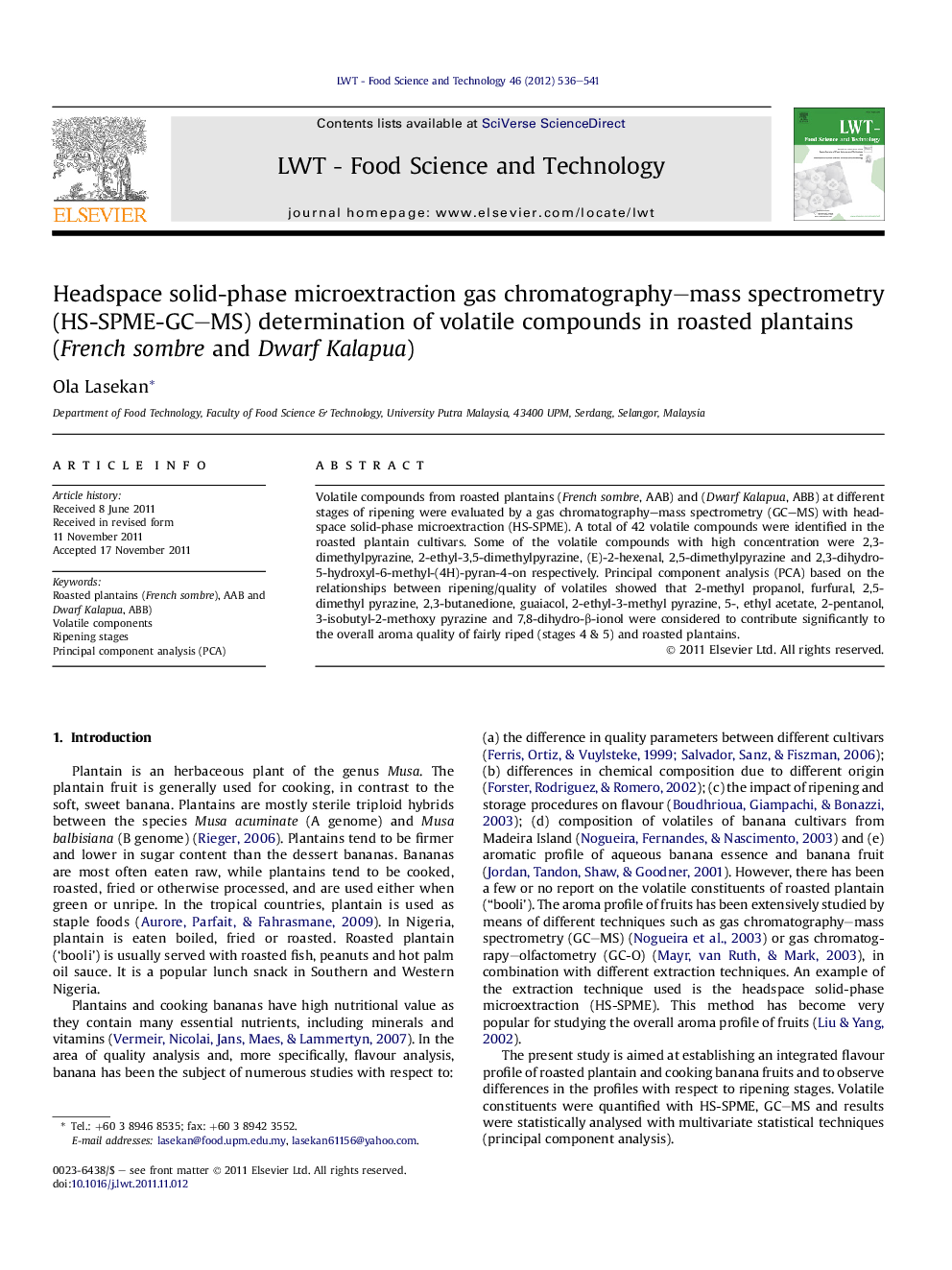| Article ID | Journal | Published Year | Pages | File Type |
|---|---|---|---|---|
| 6405735 | LWT - Food Science and Technology | 2012 | 6 Pages |
Volatile compounds from roasted plantains (French sombre, AAB) and (Dwarf Kalapua, ABB) at different stages of ripening were evaluated by a gas chromatography-mass spectrometry (GC-MS) with headspace solid-phase microextraction (HS-SPME). A total of 42 volatile compounds were identified in the roasted plantain cultivars. Some of the volatile compounds with high concentration were 2,3-dimethylpyrazine, 2-ethyl-3,5-dimethylpyrazine, (E)-2-hexenal, 2,5-dimethylpyrazine and 2,3-dihydro-5-hydroxyl-6-methyl-(4H)-pyran-4-on respectively. Principal component analysis (PCA) based on the relationships between ripening/quality of volatiles showed that 2-methyl propanol, furfural, 2,5-dimethyl pyrazine, 2,3-butanedione, guaiacol, 2-ethyl-3-methyl pyrazine, 5-, ethyl acetate, 2-pentanol, 3-isobutyl-2-methoxy pyrazine and 7,8-dihydro-β-ionol were considered to contribute significantly to the overall aroma quality of fairly riped (stages 4 & 5) and roasted plantains.
⺠HS-SPME/GC-MS were used to evaluate volatiles from roasted plantains. ⺠The plantain cultivars were French sombre and Dwarf Kalapua. ⺠Effect of ripening stages on volatiles generated during ripening were studied. ⺠A total of 42 volatile compounds were identified. ⺠PCA revealed that 11 compounds were most significant.
